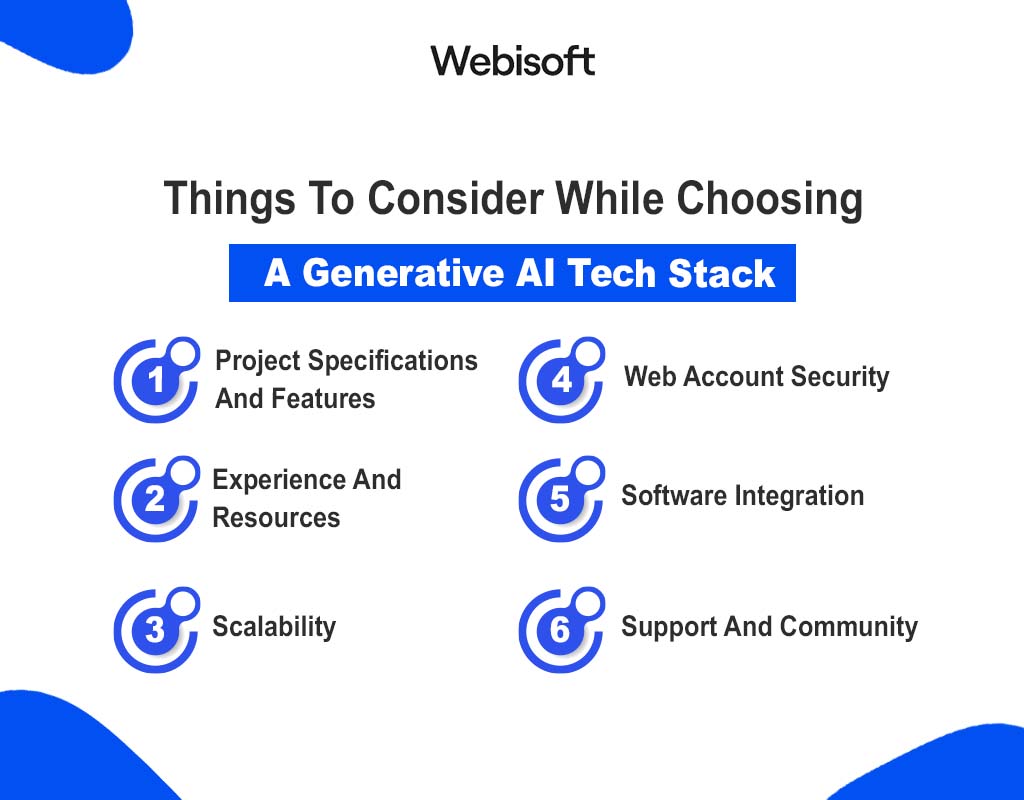Modernizing Your Tech Stack For Effective AI

Table of Contents
Assessing Your Current Infrastructure for AI Readiness
Before embarking on an AI journey, a thorough assessment of your existing infrastructure is paramount. This involves identifying gaps and limitations that could hinder your AI initiatives.
Identifying Existing Gaps and Limitations
Your current infrastructure may lack the necessary components for effective AI deployment. Common limitations include:
- Lack of scalable computing power: AI models, particularly deep learning models, demand significant computational resources. Insufficient processing power leads to slow training times and limited model capabilities.
- Insufficient data storage: AI thrives on data. If your storage capacity is inadequate, you might struggle to handle the large datasets required for training and deploying effective AI models. This includes both raw data and the processed data needed for model training and inference.
- Outdated data management systems: Inefficient data management hampers data accessibility, quality, and consistency – all critical for successful AI projects. Legacy systems often lack the flexibility and scalability needed for modern AI workloads.
- Absence of necessary APIs: Integrating AI models into existing applications requires well-defined APIs. The absence of these APIs creates significant integration challenges.
- Limited cloud integration: Cloud platforms provide crucial resources for AI, including scalable computing, storage, and pre-trained models. Limited cloud integration hinders the ability to leverage these resources efficiently.
These limitations can result in slow processing times, difficulties in handling large datasets, an inability to integrate with AI tools, and ultimately, the failure of AI projects to deliver expected results.
Evaluating Your Data Management Capabilities
Data is the lifeblood of AI. Effective data management is crucial for successful AI projects. Consider the following aspects:
- Data quality: Inaccurate, incomplete, or inconsistent data leads to unreliable AI models. Data cleaning and preprocessing are essential steps.
- Data security: Protecting sensitive data is paramount. Robust security measures are vital to ensure compliance and prevent data breaches.
- Data accessibility: AI models need easy access to data. Efficient data retrieval mechanisms are necessary for smooth operations.
- Data governance: Establishing clear guidelines and policies for data management ensures data quality, consistency, and compliance.
- Data integration: Successfully integrating data from disparate sources is crucial for building comprehensive AI models. This includes techniques like ETL (Extract, Transform, Load) processes.
Efficient data management involves techniques like data labeling, cleaning, and transformation to ensure the data is suitable for training high-performing AI models.
Understanding Your Current Software Ecosystem Compatibility
Before implementing AI/ML tools, assess the compatibility of your existing software ecosystem. Consider:
- Compatibility with AI/ML frameworks: Popular frameworks like TensorFlow, PyTorch, and scikit-learn have different strengths and weaknesses. Ensure your system is compatible with your chosen framework.
- Integration with cloud platforms: AWS, Azure, and GCP offer various AI/ML services. Choosing a cloud provider and ensuring seamless integration is essential.
- Existing application programming interfaces (APIs): Seamless integration of AI models into your existing applications depends on the availability and compatibility of APIs.
Choosing the Right Cloud Platform for AI
Cloud platforms provide scalable computing resources and pre-trained AI models, making them ideal for AI projects.
Comparing Cloud Providers' AI Services
Major cloud providers offer comprehensive AI/ML services:
- AWS SageMaker: Provides a fully managed platform for building, training, and deploying machine learning models.
- Azure Machine Learning: Offers a similar suite of tools for building, training, and deploying AI models, integrating well with other Azure services.
- Google Cloud AI Platform: Provides a comprehensive set of tools and services for building and deploying AI/ML solutions.
When choosing a provider, consider factors such as cost optimization, scalability needs, specific AI/ML requirements, and the overall ease of integration with your existing infrastructure.
Leveraging Serverless Computing for AI Workloads
Serverless computing offers significant advantages for AI workloads:
- Reduced operational overhead: You don't need to manage servers, reducing administrative burden.
- Cost efficiency: You only pay for the compute time used, minimizing costs.
- Scalability: Serverless platforms automatically scale resources based on demand.
Serverless architectures simplify AI deployment and management, allowing you to focus on building and deploying your AI models.
Optimizing Cloud Storage for AI Data
Efficient cloud storage is vital for AI:
- Object storage: Ideal for storing large amounts of unstructured data.
- Data lakes: Provide a central repository for diverse data types.
- Data warehouses: Optimized for analytical processing of structured data.
The choice of storage solution depends on data volume, access patterns, and the type of data being stored. Proper storage selection significantly impacts the performance of AI applications.
Implementing the Necessary AI/ML Tools and Frameworks
This stage involves selecting and integrating the appropriate AI/ML tools and frameworks into your tech stack.
Selecting Appropriate AI/ML Frameworks
Popular frameworks include:
- TensorFlow: A widely used framework known for its scalability and flexibility.
- PyTorch: A popular framework known for its ease of use and dynamic computation graph.
- scikit-learn: A powerful library for various machine learning tasks.
The choice of framework depends on the specific AI task, developer expertise, and project requirements. Each framework offers trade-offs between ease of use, performance, and community support.
Integrating AI/ML Models into Your Applications
Seamless integration is key to realizing the value of your AI models:
- APIs: Provide a standardized way to access and interact with AI models.
- SDKs: Offer pre-built components and libraries for easier integration.
- Model deployment pipelines: Automate the process of deploying and managing AI models.
Careful planning and execution of the integration process are crucial for successfully incorporating AI models into your applications and workflows.
Monitoring and Managing Your AI Infrastructure
Continuous monitoring and management are essential for maintaining the performance and reliability of your AI systems:
- Performance monitoring: Track key metrics such as model accuracy, latency, and resource utilization.
- Resource utilization: Optimize resource allocation to improve efficiency and reduce costs.
- Model retraining: Regularly retrain models with new data to maintain accuracy and relevance.
- Version control: Track changes to models and code to ensure reproducibility and facilitate rollback if necessary.
Robust management practices are critical for the long-term success of your AI initiatives.
Conclusion: Modernizing Your Tech Stack for Effective AI – A Path to Success
Modernizing your tech stack for effective AI involves a multi-faceted approach, from assessing your existing infrastructure and choosing the right cloud platform to implementing appropriate AI/ML tools and establishing robust monitoring practices. By addressing these key areas, you can unlock the transformative potential of AI, leading to improved efficiency, richer insights from your data, significant cost savings, and a substantial competitive advantage. A modernized tech stack ensures your AI initiatives are not just implemented, but thrive.
Start modernizing your tech stack for effective AI today! Explore resources like [link to relevant resource 1], [link to relevant resource 2], and [link to relevant resource 3] to learn more about building a robust and scalable AI infrastructure.

Featured Posts
-
 Workboat Automation Tbs Safety And Nebofleet Collaboration
May 01, 2025
Workboat Automation Tbs Safety And Nebofleet Collaboration
May 01, 2025 -
 Starbucks In Target 9 Differences You Should Know
May 01, 2025
Starbucks In Target 9 Differences You Should Know
May 01, 2025 -
 Late Goal Secures Englands Win Against France
May 01, 2025
Late Goal Secures Englands Win Against France
May 01, 2025 -
 Noa Argamani Time Magazines 100 Most Influential From Rescued Hostage To Inspiration
May 01, 2025
Noa Argamani Time Magazines 100 Most Influential From Rescued Hostage To Inspiration
May 01, 2025 -
 Dallas And 80s Soap Opera The Passing Of A Beloved Star
May 01, 2025
Dallas And 80s Soap Opera The Passing Of A Beloved Star
May 01, 2025
Latest Posts
-
 Juridische Strijd Kampen Vecht Voor Stroomnetaansluiting Via Kort Geding
May 02, 2025
Juridische Strijd Kampen Vecht Voor Stroomnetaansluiting Via Kort Geding
May 02, 2025 -
 Stroomnetaansluiting Geweigerd Kampen Dagvaardt Enexis
May 02, 2025
Stroomnetaansluiting Geweigerd Kampen Dagvaardt Enexis
May 02, 2025 -
 Kampen Start Kort Geding Tegen Enexis Stroomnetaansluiting In Geschil
May 02, 2025
Kampen Start Kort Geding Tegen Enexis Stroomnetaansluiting In Geschil
May 02, 2025 -
 Breda In Het Duister Impact Van De Stroomuitval Op De Stad
May 02, 2025
Breda In Het Duister Impact Van De Stroomuitval Op De Stad
May 02, 2025 -
 Grote Stroomstoring In Breda Updates En Informatie
May 02, 2025
Grote Stroomstoring In Breda Updates En Informatie
May 02, 2025
